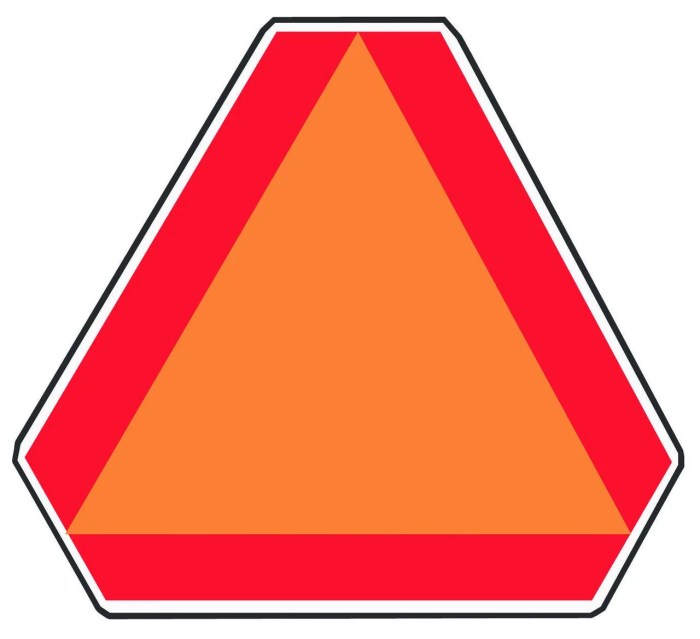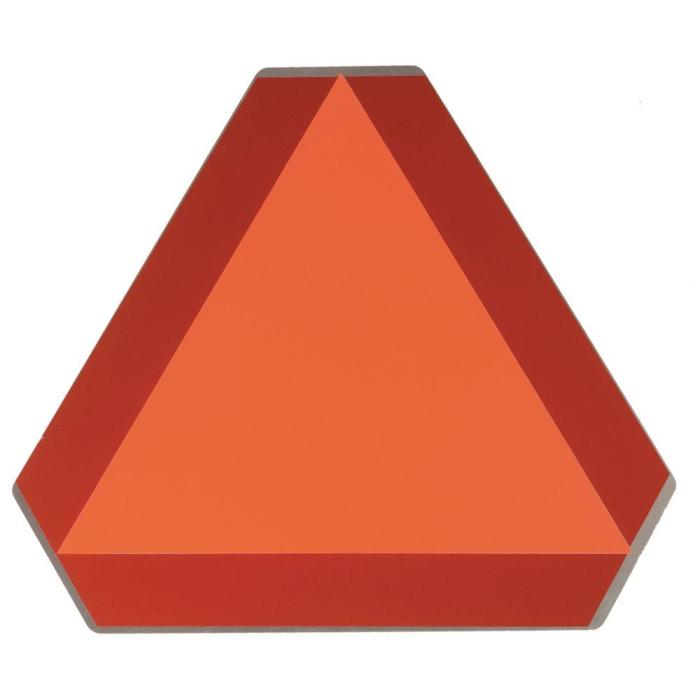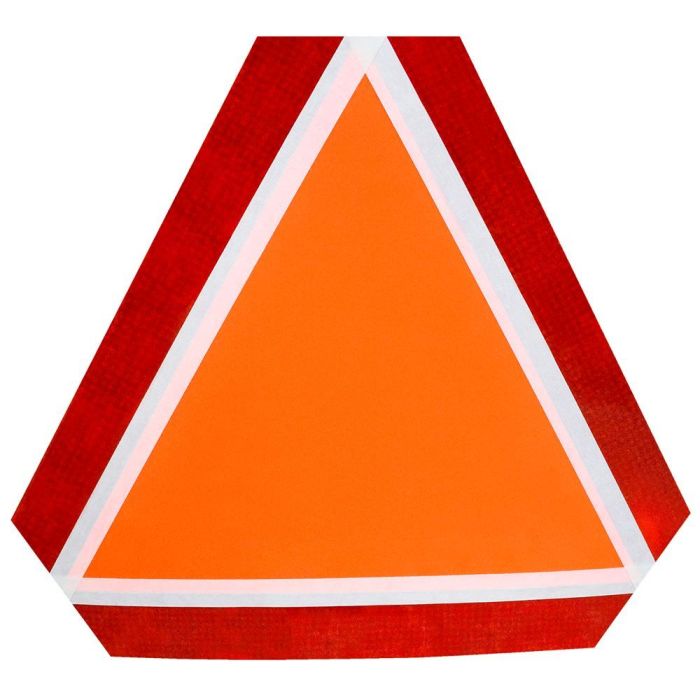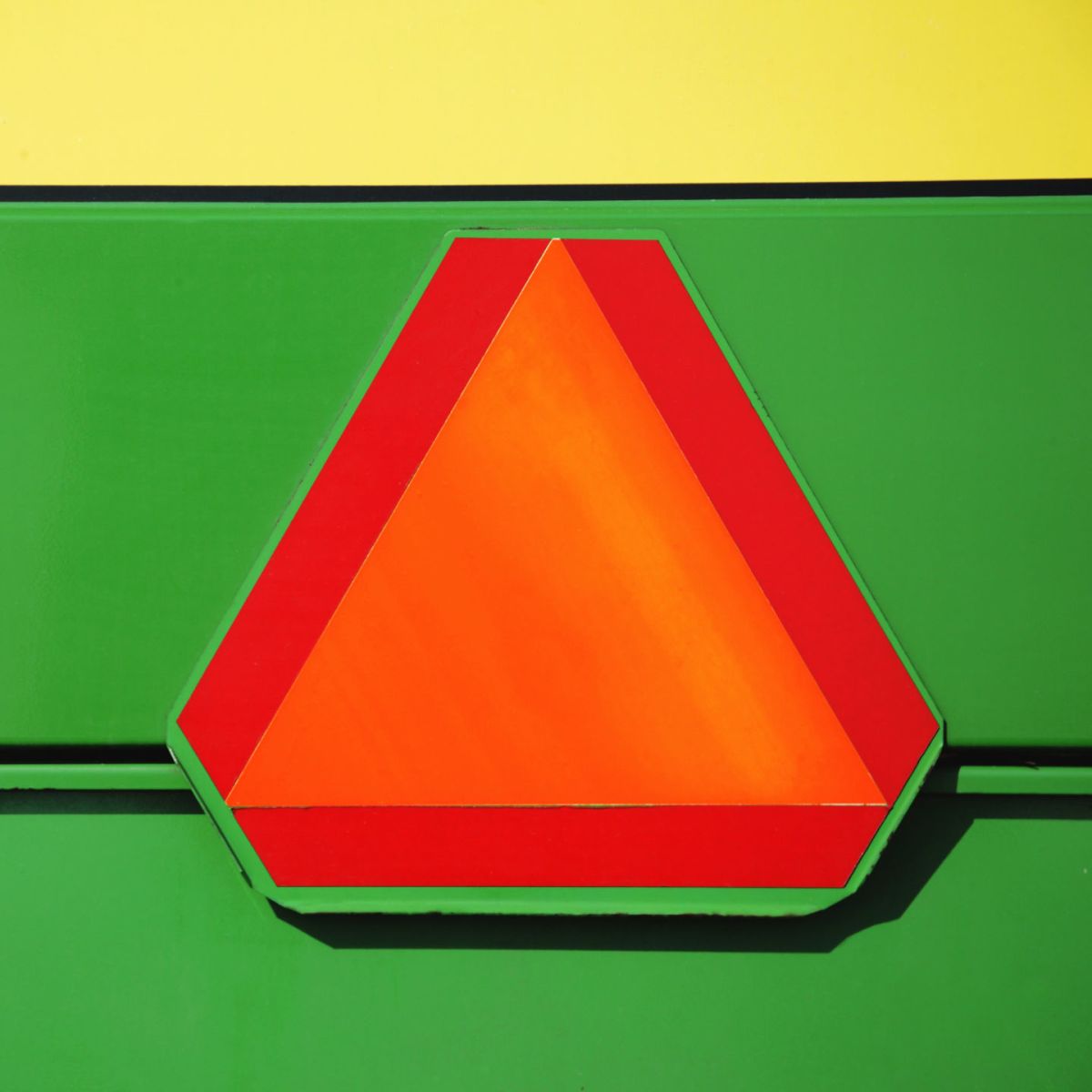Cual es la imagen del emblema vehiculo lento – The slow-moving vehicle emblem, an essential safety feature, plays a crucial role in enhancing road safety by alerting other drivers to the presence of vehicles traveling at slower speeds. This comprehensive guide delves into the design, regulations, placement, benefits, and future innovations of this distinctive emblem.
The standard design elements of the slow-moving vehicle emblem include a triangular shape, reflective red and orange colors, and the symbol of a turtle. These design choices are carefully selected to ensure high visibility and recognition from all angles.
Slow-Moving Vehicle Emblem: Cual Es La Imagen Del Emblema Vehiculo Lento

The slow-moving vehicle emblem is a highly visible, standardized marking used to identify vehicles that travel at speeds significantly below the normal flow of traffic. It serves as a critical safety measure to alert other road users of the presence of slow-moving vehicles, enhancing road safety and reducing the risk of collisions.
Design Elements
The slow-moving vehicle emblem features a distinctive design that ensures its high visibility and recognition. It typically consists of a triangular shape with a bright orange or fluorescent yellow background. The triangle is Artikeld in a contrasting color, often black or red, to enhance its visibility from a distance.
Regulations and Standards
The use of slow-moving vehicle emblems is governed by regulations in many jurisdictions worldwide. These regulations vary in specific requirements but generally mandate the use of the emblem on vehicles that meet certain criteria, such as traveling at speeds below a specified threshold.
Non-compliance with these regulations can result in penalties.
Placement and Visibility
Proper placement of the slow-moving vehicle emblem is crucial for ensuring its visibility to other road users. It should be mounted on the rear of the vehicle, centered and at a height that allows for clear visibility from all angles.
Reflective materials are often used to enhance visibility during nighttime or low-light conditions.
Exceptions and Exemptions
There are certain situations where the use of slow-moving vehicle emblems is not required. These exceptions may include vehicles that are already highly visible, such as emergency vehicles or construction equipment. Additionally, some jurisdictions may exempt certain types of vehicles from the requirement, such as bicycles or low-speed electric vehicles.
Safety Benefits and Impact
Slow-moving vehicle emblems play a significant role in enhancing road safety by increasing the visibility of slow-moving vehicles. Studies have shown that the use of these emblems can reduce the risk of rear-end collisions and other accidents involving slow-moving vehicles.
They alert drivers to the presence of these vehicles, providing them with ample time to adjust their speed and take appropriate actions.
Future Innovations and Developments, Cual es la imagen del emblema vehiculo lento
As technology advances, there is potential for innovations in the design and use of slow-moving vehicle emblems. Future developments may include the integration of reflective or illuminated materials to further enhance visibility. Additionally, emerging technologies such as wireless communication and vehicle-to-vehicle communication could be explored to provide real-time information about slow-moving vehicles, enhancing road safety even further.
FAQ Corner
What is the purpose of the slow-moving vehicle emblem?
The slow-moving vehicle emblem alerts other drivers to the presence of vehicles traveling at slower speeds, such as farm equipment, construction vehicles, and golf carts.
What are the standard design elements of the slow-moving vehicle emblem?
The emblem typically features a triangular shape, reflective red and orange colors, and the symbol of a turtle.
Where should the slow-moving vehicle emblem be placed?
The emblem should be placed on the rear of the vehicle, at a height of 3-5 feet above the ground, and visible from all angles.


